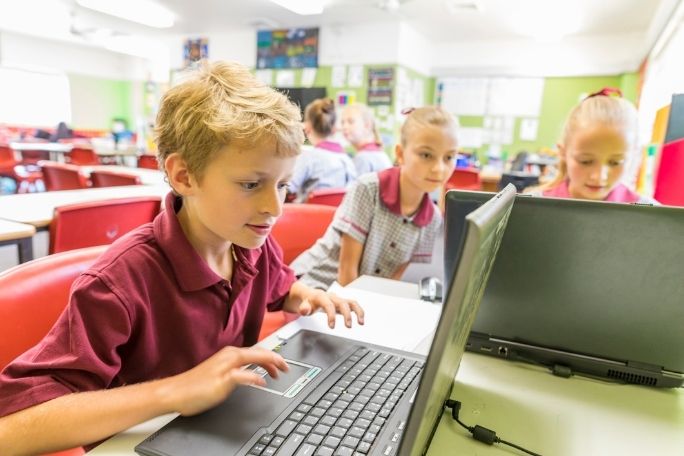Lesson summary
Students develop a social action project to address a humanitarian or environmental issue they have noticed in their neighbourhood. Students begin by looking at the problems they have noticed in their neighbourhood, then they select one problem and brainstorm ideas around taking action to address this problem. They then select one action and develop and implement a social action project around this action.
Learning intentions:
Students will...
- understand the processes required for planning and implementing a social action project
Success criteria:
Students can...
- realise they have the ability to create change in their community
- plan and assess a project
- work collaboratively
Lesson guides and printables
Curriculum links
Select your curriculum from the options below.
Lesson details
Curriculum mapping
Australian curriculum content descriptions:
Year 3 HASS:
- Interact with others with respect to share points of view (ACHASSI059)
- Reflect on learning to propose actions in response to an issue or challenge and consider possible effects of proposed actions (ACHASSI060)
Year 4 HASS:
- Interact with others with respect to share points of view (ACHASSI080)
- Reflect on learning to propose actions in response to an issue or challenge and consider possible effects of proposed actions (ACHASSI081)
Year 5 HASS:
- Work in groups to generate responses to issues and challenges (ACHASSI102)
- Use criteria to make decisions and judgements and consider advantages and disadvantages of preferring one decision over others (ACHASSI103)
- Reflect on learning to propose personal and/or collective action in response to an issue or challenge, and predict the probable effects (ACHASSI104)
Year 6 HASS:
- Work in groups to generate responses to issues and challenges (ACHASSI130)
- Use criteria to make decisions and judgements and consider advantages and disadvantages of preferring one decision over others (ACHASSI131)
- Reflect on learning to propose personal and/or collective action in response to an issue or challenge, and predict the probable effects (ACHASSI132)
NESA and VCAA: Click here for NESA and VCAA curriculum links for this lesson
General capabilities: Critical and Creative Thinking, Personal and Social Capability
Relevant parts of Year 3 HASS achievement standards: Students reflect on their learning to suggest individual action in response to an issue or challenge.
Relevant parts of Year 4 HASS achievement standards: Students reflect on their learning to propose action in response to an issue or challenge, and identify the possible effects of their proposed action.
Relevant parts of Year 5 HASS achievement standards: Students work with others to generate alternative responses to an issue or challenge and reflect on their learning to independently propose action, describing the possible effects of their proposed action.
Relevant parts of Year 6 HASS achievement standards: Students collaboratively generate alternative responses to an issue, use criteria to make decisions and identify the advantages and disadvantages of preferring one decision over others. They reflect on their learning to propose action in response to an issue or challenge and describe the probable effects of their proposal.
Unit of work: Roots & Shoots – Upper Primary
Time required: 160+ mins
Level of teacher scaffolding: Medium – lead students through designing and delivering social action project
Resources required
- Student Worksheets – one copy per student
- Device capable of presenting a website to the class
- Project Checklist. Project Planning Guide
- Examples Of Action Factsheet (optional)
- SMART Criteria (optional)
- Other materials will depend on individual project needs
- Device capable of taking photos, such as a tablet or camera
- Butcher’s paper and marker pens
- Online stopwatch
Skills
- Collaboration
- Communication
- Community engagement
- Creativity
- Critical thinking
- Social skills
- Problem solving
Additional info
This lesson has been developed in partnership with Jane Goodall’s Roots & Shoots program. Roots & Shoots is a global youth-led program of young people taking action to improve our world. By participating in this lesson, you and your students will be joining thousands of young people and teachers working to make positive change in our world.


Welcome back!
Don't have an account yet?
Log in with:
Create your free Cool.org account.
Many of our resources are free, with an option to upgrade to Cool+ for premium content.
Already have an account?
Sign up with:
By signing up you accept Cool.org's Terms and Conditions(Opens in new tab) and Privacy Policy(Opens in new tab).